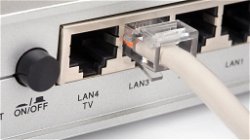Understanding Wide Area Networks (WANs): Connectivity Beyond Boundaries
Swati Mandana
. 2 min read
In today's interconnected world, communication and data transfer play a crucial role in business, education, research, and social interactions. Online chat and Wide Area Networks (WANs) serve as the backbone of this global connectivity, enabling seamless data exchange across vast distances. This article aims to provide an overview of WANs, explaining their significance, components, functioning, and the challenges they face.

What is a Wide Area Network (WAN)?
A Wide Area Network (WAN) is a type of computer network that spans a large geographical area, connecting multiple Local Area Networks (LANs) or individual devices across cities, states, countries, or even continents. WANs are designed to facilitate the efficient transmission of data, voice, and video between geographically dispersed locations.
Key Components of WANs
- Routers: Routers are essential components in a WAN that direct data packets along the most efficient paths across the network. They use routing protocols to determine the best routes and maintain updated routing tables.
- Switches: WAN switches help create virtual circuits that establish temporary connections between two distant points in the network. These switches enable data to flow directly from the source to the destination without broadcasting it to every device on the network.
- Communication Links: WANs rely on various communication links, such as leased lines, dedicated connections, and public networks like the Internet, to connect remote locations. These links vary in speed, cost, and reliability based on the specific requirements of the network.
- Modems: In older WAN implementations, modems were used to convert digital data into analog signals for transmission over analog phone lines. However, modern WANs predominantly use digital communication technologies.
- Protocols: WANs employ various network protocols, such as TCP/IP (Transmission Control Protocol/Internet Protocol), to ensure seamless communication between different devices and networks.
Functioning of WANs
WANs operate on the principle of packet switching, where data is divided into small packets and transmitted across the network. These packets can take different routes and be reassembled at the destination, ensuring efficient use of available communication links.
When data is sent across a WAN, it encounters routers and switches that determine the optimal path based on factors like latency, bandwidth availability, and network congestion. These devices also handle error correction and ensure data integrity during transit.
Applications of WANs
- Business Networks: WANs are extensively used by businesses with multiple offices or branches to connect their dispersed locations. This enables seamless collaboration, data sharing, and centralized management of resources.
- Internet Connectivity: The Internet itself is a massive WAN, connecting billions of devices worldwide and providing access to various online services and information.
- Cloud Computing: WANs play a crucial role in cloud computing, facilitating access to cloud-based services and data storage from anywhere in the world.
Challenges and Security Concerns
- Latency and Bandwidth: WANs can experience higher latency and limited bandwidth compared to Local Area Networks (LANs) due to the vast distances involved and potential network congestion.
- Security Risks: WANs traverse public networks like the Internet, making them susceptible to security threats such as data breaches, malware attacks, and unauthorized access.
- Reliability: Ensuring consistent and reliable connectivity across diverse geographical locations can be challenging, especially in areas with poor infrastructure.
Conclusion
Wide Area Networks are the backbone of global connectivity, enabling efficient data transmission and communication across vast distances. While WANs come with challenges, advancements in technology continue to improve their performance, security, and reliability. As our world becomes increasingly interconnected, WANs will remain a critical component in shaping the future of communication and information exchange.
More Stories from
Unveiling the Power of SEO: Advantages, Disadvantages, and Best Practices for Online Success
Remember that SEO is an ongoing process that requires monitoring, adjustments, and staying up to date with industry trends.
Fortifying Digital Assets: Ensuring Robust IP Security in a Connected World
It highlights the value of safeguarding intellectual property from external and internal threats, emphasizing the preservation of innovation and competitive advantage.
Decoding the DNS: Enabling Seamless Internet Connectivity
The Domain Name Service (DNS) is a vital system that translates user-friendly domain names into machine-readable IP addresses, enabling seamless internet connectivity.
LAN Event Generator: Powering the Next Generation of Local Area Network Gatherings
Discover the game-changing impact of the LAN Event Generator, a sophisticated software application designed to streamline the organization of LAN events.









.png?width=40&aspect_ratio=1:1)


.png?width=40&aspect_ratio=1:1)